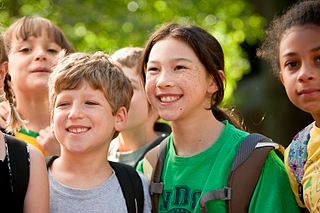From Guest Blogger Anago: How Elementary Schools Can Practice Going Green

Many K-12 schools across the nation have started implementing green practices and, as the foreword of The Center for Green School Greening Our Schools guide states, “Every story about a green school is a story about the improved health, education and environment of our kids, our teachers and our communities.”[1] Written by the U.S. Green Building Council, this guide goes on to state that “Green schools are more than buildings. They are places where children learn the wonders of the world and teachers prepare the next generation of leaders and citizens… Green schools are energy efficient, helping to lower utility costs and reduce waste… [and] showcase a community’s commitment to its children and their future.”[2]
After carrying out a study, EcoLiteracy.org concluded that “greening schools today is extremely cost-effective, and represents a fiscally far better design choice. Building green schools is more fiscally prudent and lower risk than continuing to build unhealthy, inefficient schools.”[3] By educating our children in schools and at home about how human beings are affecting the planet and what our species can do to minimize such harmful behavior, we can have a positive influence on upcoming generations.
In essence, what we do now matters, and educating our youngsters is paramount.
“Tell me and I forget. Teach me and I may remember. Involve me and I learn.” – Benjamin Franklin
It’s much easier to make someone understand why something should be done when you involve them, instead of just throwing a few facts and figures in their general direction and hoping that they understand. Therefore, to help children appreciate the point of going green, a highly effective teaching method involves leaving the inside of the classroom and enjoying the fresh air while setting up – and continuously tending – a vegetable garden.
In doing so, you are involving each of the child’s senses, which will make the out-of-classroom experience more absorbing and attention-grabbing. Caring for a veggie patch incorporates many sights, sounds, smells and textures that are simply not available in a stuffy, dull classroom setting, and this kind of hands-on teaching technique will impact on a child’s imagination so much more than reading out some dry environmental statistics indoors. Practical application and engagement is crucial.
Another way of involving children in a hands-on manner is to encourage them to recycle, especially when it comes to everyday water consumption and paper wastage. Create a recycling program that shows what actions create the most waste, as well as ways to reduce the waste that is generated. Furthermore, integrate different practices to decrease the amount of energy used during a school day. For example, a school-wide switch from conventional incandescent light bulbs to low-power compact fluorescent lights or energy-efficient LEDs in each classroom and office area can make a sizeable impact in the long run. This not only makes a difference in relation to the amount of energy consumed but also saves money since these types of light bulbs cost considerably less.
Greening a school is not entirely about saving money. In fact, the National Association of Elementary School Principals reported in 2012 that “Student achievement can also increase with building improvements alone. Students moving from a conventional school to a new green elementary school in Pennsylvania experienced substantial improvements in health and test scores, including a 19 percent increase in oral reading fluency scores.”[4] As such, it seems that greening your school can increase the efficacy of the overall learning process, with the report going on to state that North Carolina students improved in reading and math after moving to a green school.
Whether for business-motivated reasons or instead due to genuine interest and concern about the future of our children, people are showing how “doing their bit” can reduce the impact they make on the environment. Going green is swiftly becoming an established way of life in many parts of the world, especially regarding the ways we recycle and reuse products, as well as how we reduce the amount of waste created. It is extremely encouraging to see how receptive many corporations are in highlighting to consumers how much they care about the planet, and the measures they are carrying out for the benefit of subsequent generations.
Anago Dallas are proud to offer their janitorial services to residents living in the Greater Dallas Metropolitan area, including green cleaning options for schools, daycares, healthcare facilities, auto dealerships, restaurants and government office buildings. Please visit us online at Anago Cleaning Systems or call (214) 237-7462 today if you would like more information
[1] http://www.centerforgreenschools.org/docs/GreeningOurSchools_PRINT.pdf
[2] Ibid.
[3] http://www.ecoliteracy.org/essays/green-school-design-cost-effective-healthy-and-better-education
[4] https://www.naesp.org/communicator-december-2012/going-green-school-improvement-strategy
